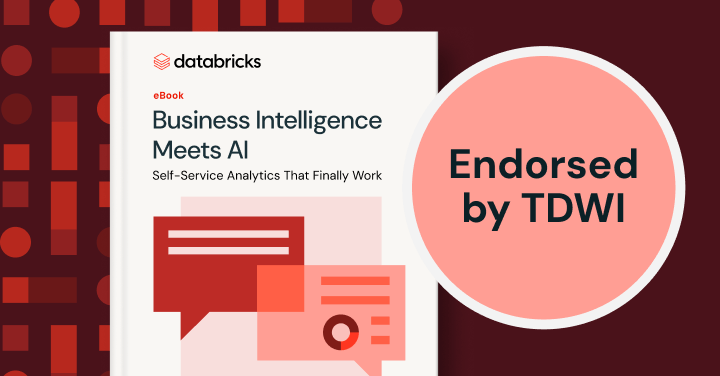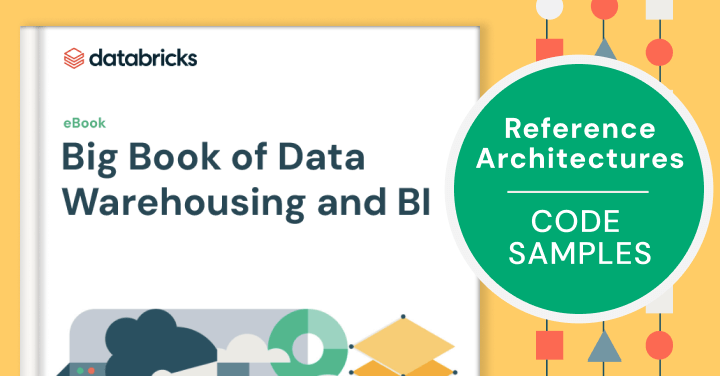비즈니스 인텔리전스 도구 개요
비즈니스 인텔리전스(BI) 도구는 데이터를 수집, 처리, 분석하고 비즈니스 데이터를 의미 있게 보여주도록 설계된 소프트웨어 애플리케이션입니다. 본질적으로 이러한 도구들은 원시 데이터를 실행 가능한 인사이트로 변환하여 조직 전반에 걸친 전략적 의사결정을 이끌어냅니다. BI 도구는 기본적인 보고 및 데이터 시각화에서부터 고급 분석과 예측 모델링에 이르기까지 광범위한 기능을 포괄합니다.
BI 도구의 주요 목적은 단순한 데이터 표현을 넘어섭니다. 이들은 복잡한 데이터 세트와 비즈니스 이해 사이의 다리 역할을 하여, 조직이 트렌드를 파악하고 성과 지표를 모니터링하며 성장 기회를 발견할 수 있도록 지원합니다. 최신 BI 솔루션은 다양한 데이터 소스와 매끄럽게 통합되어 데이터의 정확성과 거버넌스 기준을 유지하면서 비즈니스 운영에 대한 통합된 관점을 제공합니다.
현대 비즈니스에서 BI 도구의 중요성은 아무리 강조해도 지나치지 않습니다. 오늘날의 데이터 중심 경제에서 조직은 고객 상호작용, 운영 프로세스, 금융 거래, 시장 활동 등 여러 접점에서 방대한 양의 정보를 생성합니다. 적절한 BI 인프라가 없다면 이 귀중한 데이터는 활용되지 않은 채 경쟁 우위를 놓치는 기회를 의미합니다. BI 도구는 데이터 접근을 민주화하여 기술적 사용자와 비기술적 사용자 모두가 인사이트를 도출할 수 있도록 지원하며, 이는 일상적인 운영 의사결정에서부터 장기적인 전략적 계획에 이르기까지 �모든 것에 정보를 제공합니다.
추가로 살펴보기
비즈니스 인텔리전스 도구 활용의 이점
향상된 데이터 분석 및 보고 역량은 BI 도구의 혜택의 기반을 형성합니다. 이러한 플랫폼은 서로 다른 데이터 소스를 통합하여 일관된 보고서와 대시보드로 만들어 수동 데이터 편집이라는 시간 소모적인 과정을 제거합니다. 사용자는 대화형 시각화를 생성하여 스프레드시트나 원시 데이터 형식에서는 쉽게 눈에 띄지 않는 패턴과 이상치를 드러낼 수 있습니다. 보고 과정을 자동화하면 일관성을 보장하는 동시에, 귀중한 인적 자원을 더 높은 수준의 분석과 전략적 사고에 활용할 수 있도록 합니다.
향상된 의사결정 역량은 더 나은 데이터 접근성과 표현에서 자연스럽게 도출됩니다. 이해관계자가 정확하고 관련성 있는 정보를 실시간으로, 이해하기 쉬운 형식으로 접근할 수 있을 때 신속하게 근거 있는 결정을 내릴 수 있습니다. BI 도구는 단순히 �“무엇이 발생했는가”뿐만 아니라 “왜 발생했는가”와 “앞으로 무엇이 발생할 수 있는가”를 이해하는 데 필요한 맥락을 제공합니다. 이러한 비즈니스 운영에 대한 가시성 증대는 직관이나 가정에 대한 의존도를 줄이고 더 성공적인 결과로 이어집니다.
현대 BI 도구에서 AI와 머신러닝의 역할은 환경을 크게 변화시켰습니다. 이러한 기술은 예측 분석, 자동 패턴 인식, 그리고 전통적인 보고를 넘어서는 지능형 추천을 가능하게 합니다. AI 기반 BI 도구는 방대한 데이터 세트 전반에서 인간 분석이 놓칠 수 있는 상관관계를 식별할 수 있으며, 머신러닝 알고리즘은 과거 데이터와 결과를 기반으로 정확성을 지속적으로 개선합니다. 이러한 발전은 BI 도구를 반응적이기보다 더욱 선제적으로 만들어, 조직이 도전에 대비하고 기회를 예측할 수 있도록 돕습니다.
주요 비즈니스 인텔리전스 도구 비교
주요 BI 플랫폼을 평가할 때, 여러 두드러진 솔루션들은 데이터 분석과 시각화에 대한 서로 다른 접근 방식을 보여줍니다. 마이크로소프트의 종합적인 BI 솔루션인 Power BI는 마이크로소프트 생태계와 깊이 통합되어 있으며, 강력한 셀프 서비스 분석 기능을 제공합니다. 이 도구의 강점은 Office 사용자에게 친숙한 인터페이스와 경쟁력 있는 가격 구조에 있으며, 이미 마이크로소프트 기술에 투자한 조직에서 쉽게 접근할 수 있도록 합니다.
Tableau는 데이터 시각화 분야에서 선도적인 입지를 구축했으며, 사용자가 광범위한 기술 지식 없이도 정교한 시각화를 생성할 수 있도록 지원하는 강력한 드래그 앤 드롭 기능을 제공합니다. 이 도구의 강점은 복잡한 데이터 관계를 처리하고 다양한 청중에게 인사이트를 효과적으로 전달��할 수 있는 매력적인 시각적 스토리를 만드는 데 있습니다.
Looker는 현재 구글 클라우드의 일부로, 현대적인 데이터 플랫폼 통합에 중점을 두며 모든 보고와 분석 전반에 걸쳐 일관된 비즈니스 로직을 보장하는 모델링 계층을 제공합니다. 이 접근 방식은 데이터 정확성과 보안을 유지하면서 관리되는 셀프 서비스 분석을 강조합니다.
데이터브릭스 AI/BI 대시보드와 Genie는 현대적인 데이터 인텔리전스 플랫폼을 위해 특별히 구축된 새로운 형태의 비즈니스 인텔리전스를 대표합니다. AI/BI 대시보드는 사용자가 자연어와 포인트 앤 클릭 방식을 통해 시각적 보고서와 대시보드를 생성할 수 있도록 하며, 데이터브릭스 SQL 클러스터를 활용하여 데이터를 처리합니다. AI/BI Genie는 사용자가 자연어로 데이터에 대한 질문을 하고 즉각적이고 설명 가능한 인사이트를 얻을 수 있도록 하는 대화형 분석 도구입니다. 이러한 통합은 데이터 처리와 시각화 사이의 전형적인 인계 단계를 제거하여 전체 분석 워크플로우를 간소화합니다.
BI 소프트웨어 선택 시 고려해야 할 요소
데이터 소스와 통합 기능은 BI 소프트웨어를 선택할 때 가장 중요한 고려사항이 됩니다. 조직은 클라우드 데이터베이스, 온프레미스 시스템, API 또는 파일 기반 소스 등 기존 데이터 인프라에 원활하게 연결할 수 있는 도구가 필요합니다. 실시간 데이터 스트림과 배치 처리 요구 사항을 다루는 능력은 플랫폼마다 크게 다르므로, 특정 비즈니스 요구를 충족하기 위해 이 평가가 매우 중요합니다.
사용성 및 사용자 친화성은 BI 구현의 실제 도입과 성공을 결정합니다. 최고의 기술적 역량도 최종 사용자가 플랫폼을 효과적으로 활용하지 못한다면 의미가 없습�니다. 비즈니스 분석가부터 경영진 이해관계자까지 다양한 사용자 유형에 따른 학습 곡선을 고려해야 합니다. 비기술적 사용자도 자신만의 보고서와 대시보드를 만들 수 있게 하는 셀프 서비스 기능은 종종 가장 높은 투자 수익률을 제공합니다.
비용과 확장성 요소는 즉각적인 비용뿐만 아니라 장기적인 성장 고려사항도 포함합니다. 라이선스 모델은 공급업체마다 크게 다르며, 일부는 사용자당 비용을 청구하고, 다른 일부는 데이터 볼륨에 따라, 또 다른 일부는 정액 요금을 제공합니다. 조직은 현재 비용뿐만 아니라 사용자 증가, 데이터 볼륨 증가, 기능 확장 필요와 함께 비용이 어떻게 확장되는지도 평가해야 합니다.
비즈니스 인텔리전스 도구에 대한 일반적인 질문
가장 인기 있는 비즈니스 인텔리전스 도구는 무엇인가요? 시장 점유율은 변동하지만, Power BI와 Tableau는 지속적으로 가장 널리 채택된 플랫폼으로 평가됩니다. 특히 Power BI는 Microsoft Office와의 통합성과 경쟁력 있는 가격 구조 덕분에 상당한 입지를 확보하고 있습니다. 그러나 인기를 평가할 때는 단순히 시장 점유율만이 아니라 조직의 구체적인 요구와 비교하여 고려해야 합니다.
SQL은 비즈니스 인텔리전스 도구인가요? SQL은 자체적으로 BI 도구는 아니며, 대부분의 BI 플랫폼의 기반을 이루는 데이터베이스 질의 언어입니다. 기술적 사용자는 SQL 질의를 통해 직접 인사이트를 생성할 수 있지만, 현대 BI 도구는 수동 SQL 코딩의 필요성을 없애는 시각적 인터페이스를 제공하며, 종종 내부적으로 SQL 질의를 자동으로 생성합니다.
Microsoft Excel은 비즈니스 인텔리전스 도구인가요? Excel은 많은 조직에서 기본적인 도구로 사용되며, 데이터 분석, 시각화 및 보고 기능을 제공합니다. 그러나 전용 BI 플랫폼이 제공하는 고급 기능, 확장성, 협업 기능은 부족합니다. Excel은 여전히 즉석 분석에 유용하지만, 조직은 데이터 복잡성과 사용자 기반이 성장함에 따라 일반적으로 전문 BI 도구로 발전합니다.
비즈니스 인텔리전스의 미래 동향
AI 기반 예측 분석은 BI 진화의 다음 개척지입니다. 이러한 기능은 단순한 기술적 분석을 넘어 실행 가능한 권장 사항과 예측을 제공합니다. 머신러닝 알고리즘은 데이터 패턴과 사용자 상호작용으로부터 지속적으로 학습하여, BI 도구가 더 지능적이고 선제적으로 관련 인사이트를 드러내도록 만듭니다.
셀프 서비스 BI 솔루션의 부상은 조직 전반에서 데이터 접근을 민주화하는 과정을 계속 이어갑니다. 향후 발전은 데이터 분석의 기술적 장벽을 더욱 낮추어, 비즈니스 사용자가 IT 부서나 데이터 전문가에 의존하지 않고도 정교한 분석을 수행할 수 있도록 합니다. 자연어 처리와 대화형 인터페이스는 데이터를 다루는 과정을 단순히 평이한 영어로 질문하는 것처럼 간단하게 만듭니다.
데이터 시각화 도구의 중요성 증가는 인간의 이해가 더 나은 의사결정을 이끈다는 인식이 확대되고 있음을 반영합니다. 미래의 BI 플랫폼은 증강 현실과 사용자 행동 및 선호에 따라 적응하는 대화형 대시보드를 포함한 더 정교한 시각화 옵션을 제공할 것입니다. 이러한 발전은 조직 전반의 다양한 사용자에게 복잡한 데이터를 더 쉽게 접근하고 실행 가능하도록 만듭니다.


